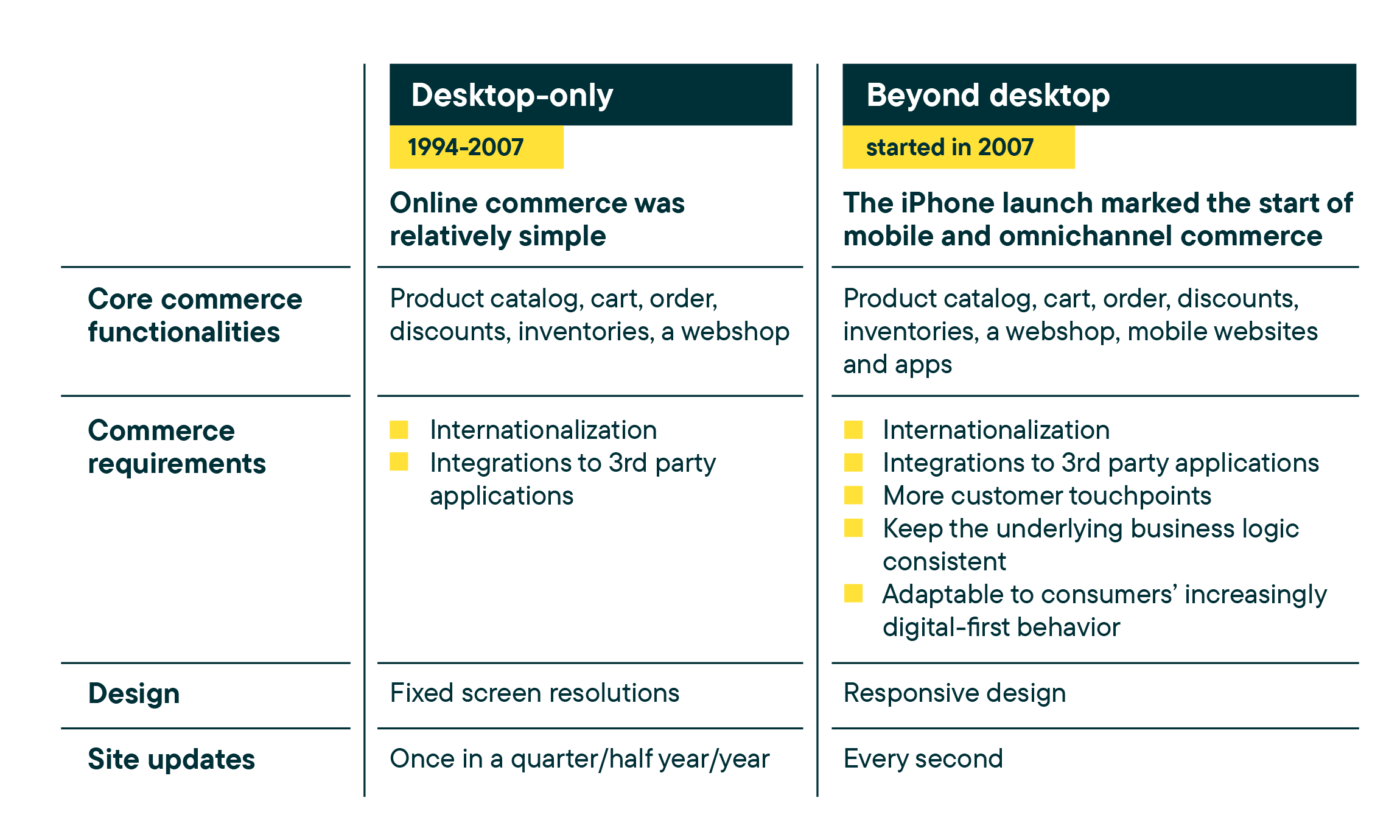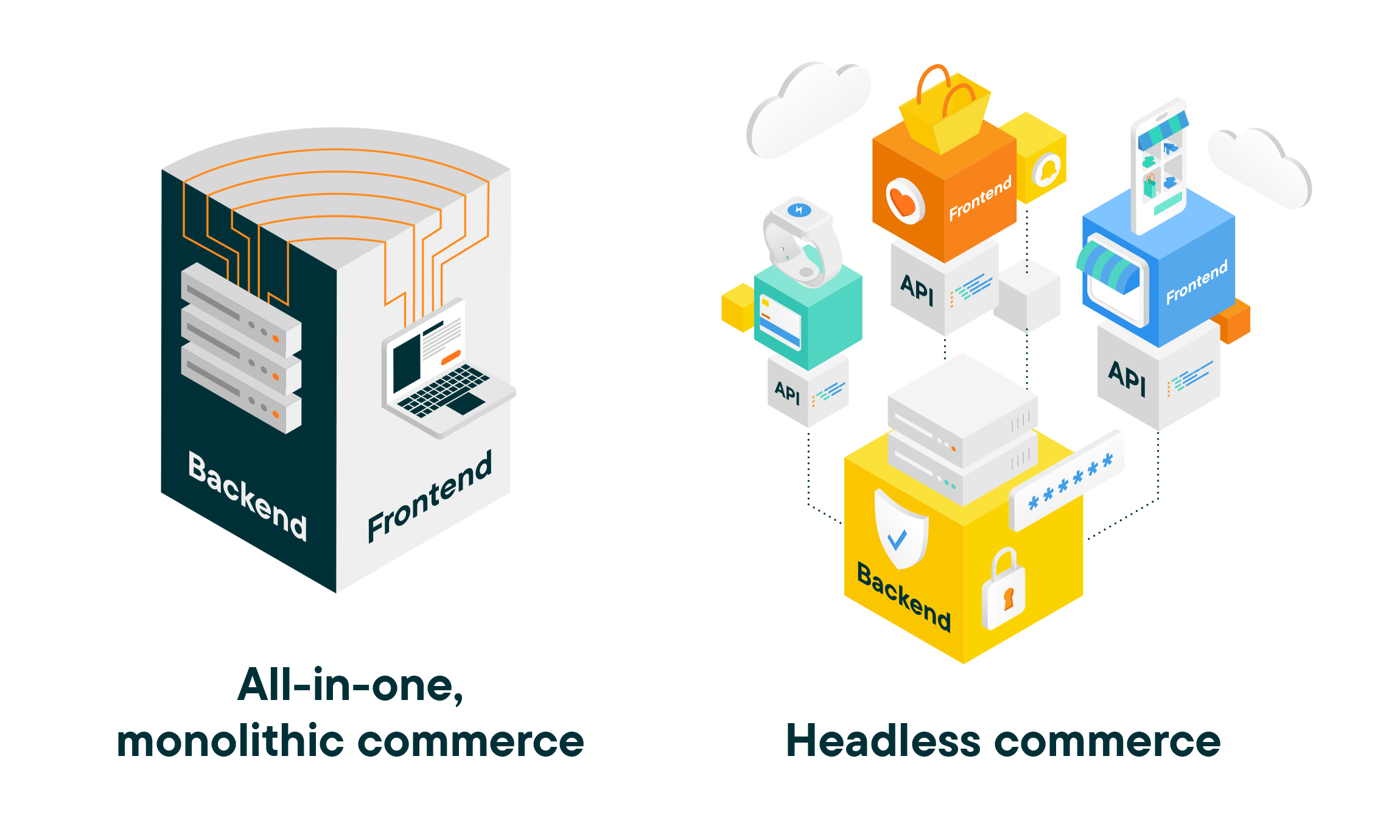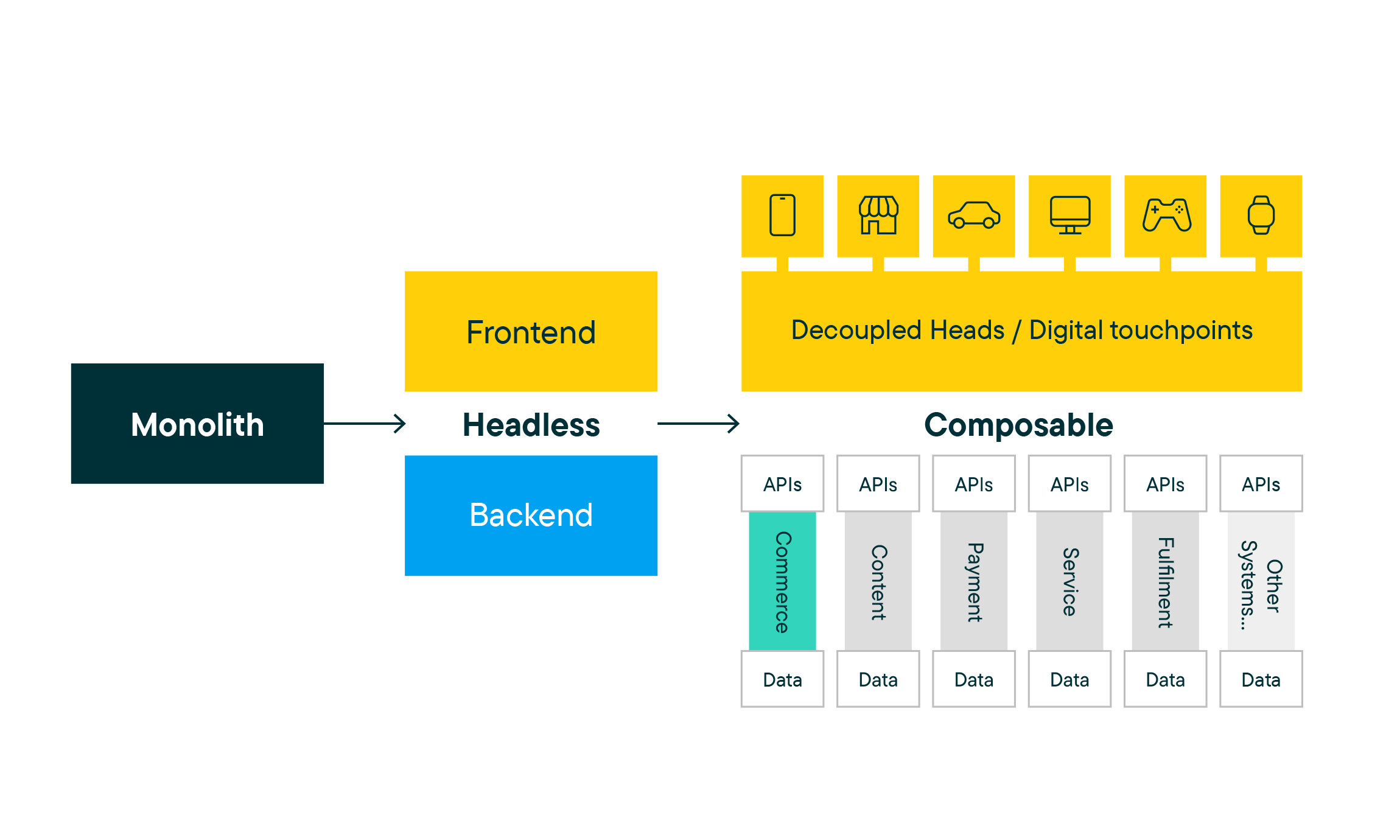
10 years after headless topped the charts in digital trends, it is now mainstream — and the foundational technology forging composable commerce ahead.

It’s been 10 years since the term “headless commerce” was coined by Dirk Hoerig, CEO and co-founder of commercetools, and it continues to top technology headlines. After all, the latest years of global instability have proved that the flexibility and agility of headless are a must-have for businesses to stay ahead of changing consumer behavior and market shifts.
Businesses stuck with legacy, traditional commerce platforms now recognize that headless, alongside the other principles of MACH™ — microservices-based, API-first and cloud-native — is the path forward for agile enterprises sailing through times of constant change and turbulence. A sign that the headless commerce approach has reached mainstream status is that Gartner predicts that, by 2023, prices for B2C digital commerce platforms will be 30% less than in 2019 due to feature commoditization and “headless” implementations.
Application leaders can achieve the benefits of API-based digital commerce by deploying API-based, headless solutions, which are becoming popular with more organizations.
Gartner
Don’t make your head spin: A brief history of headless commerce architecture
Despite the growing number of headless implementations over the years, there’s still a fair amount of confusion on what headless commerce is and the impact it brings. The importance and benefits of headless commerce stem from the digital evolution from desktop-only to the multi-layered omnichannel world we live in today.
Let’s go back to the 1990s, when eCommerce was born. The first generation of digital commerce delivered monolithic, all-in-one suites that became the default in desktop-based eCommerce. At that time, shopping was twofold: Buy on the online store or on the computer. That simple shopping experience stayed that way until the first iPhone was launched in 2007, marking the beginning of the “beyond desktop” era in eCommerce, evolving toward mobile-first and omnichannel shopping.
This complex landscape, paired with the global instability that heavily shifted consumer behavior toward digital, requires a level of flexibility, agility and scalability that all-in-one suites cannot match.

The fact is all-in-one suites were built for a world that ceased to exist long ago. In today’s context, they’re too rigid for an environment of constant change. It takes too long to update, upgrade and perform any improvements in a system in which all components — frontends and backends — are deeply tied into each other. This means even minor code changes affect the entire software stack, leading to downtime and lost business.
The issue many companies face nowadays is the mismatch between the platform they use (all-in-one suites still capture the lion’s share of digital commerce solutions) and what they need to deliver to stay competitive and grow.
Headless commerce solutions arose as a response to the shortcomings of the monolithic approach by decoupling the frontends (the presentation layer, like your webshop or Instagram profile) and backend (the commerce engine handling all product, pricing and customer data, as well as the transaction). The frontends and backend operate independently and communicate via APIs on top of a microservice, so they’re always in sync.

This clear separation maximizes flexibility and agility for brands:
The backend is not reliant on a frontend to be built in the same language or framework. Any changes can be performed on the fly without affecting the overall infrastructure or causing risks of downtime or crashes.
Frontend developers can build flexible user interfaces (UIs) on a single platform that can support multiple touchpoints (instead of just a webshop) and business models (B2C, B2B, D2C), all connected to one backend as a central hub.
Alter frontend elements to run campaigns and promotions and create a state-of-art customer experience for any frontend or device without touching backend functions.
Going headless with a modern tech stack is a snowball effect that starts with smaller steps like moving into the cloud. Behind the scenes, cloud computing providers such as Google Cloud and AWS provide auto-scalability and top-notch security, as well as distributed and reliable infrastructure for maximum availability and uptime. This opens up the doors for companies to modernize other systems like commerce and CRM, benefiting from more flexibility and the freedom to react faster to market changes and customer demands.
How’s headless commerce evolving?
As digital commerce moves away from the monolithic paradigm, the evolution of headless — together with the other principles of MACH — is to provide the technical delivery model for composable commerce.

In short, composable commerce is a LEGO-like modular approach that enables brands to leverage best-of-breed building blocks such as search, cart or checkout (also known as packaged business capabilities or PBCs) and “compose” them according to their needs.
Essentially, composable commerce takes headless further from a simple frontend/backend separation to an ecosystem where every component is independent. In a “best-for-me” system, brands can choose each element of their digital footprint that best suits their business needs.
Monolithic digital commerce applications cannot support the agility and flexibility needed to support fast-moving digital business. Organizations will need to move toward composable commerce to keep up with the pace of change in customer demand.
Gartner
Beyond being an alternative architecture for brands moving away from monolithic platforms, composability comes into play as a model for companies to embrace change instead of repelling it. With “composable thinking,” businesses can adopt a fast-changing modular ecosystem whereby everything is designed to change. In fact, Gartner predicts that, by 2024, the mantra for new SaaS will be composable API-first and API-only, relegating traditional SaaS vendors as "legacy."
What the future will bring is anyone’s guess, but with composability expected to reach mainstream adoption between five to 10 years, it’s safe to say that “composable thinking” will transform digital businesses in the next decade — just like headless did a decade ago.
Explore all the advantages of composable commerce in our latest white paper, “Why composable commerce will change the way you run your business.”